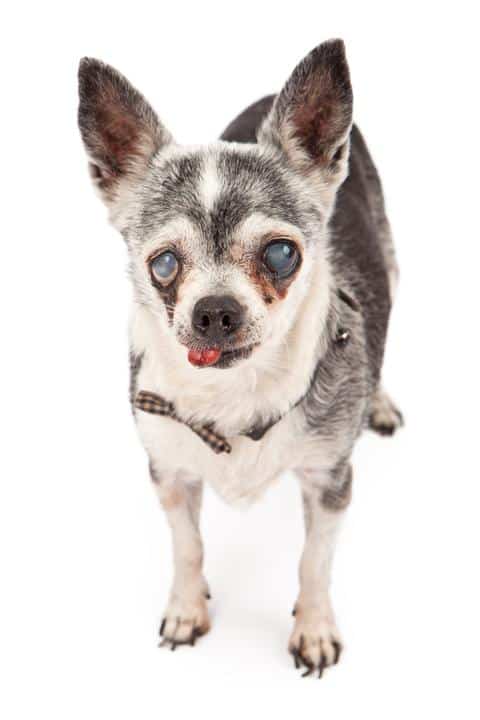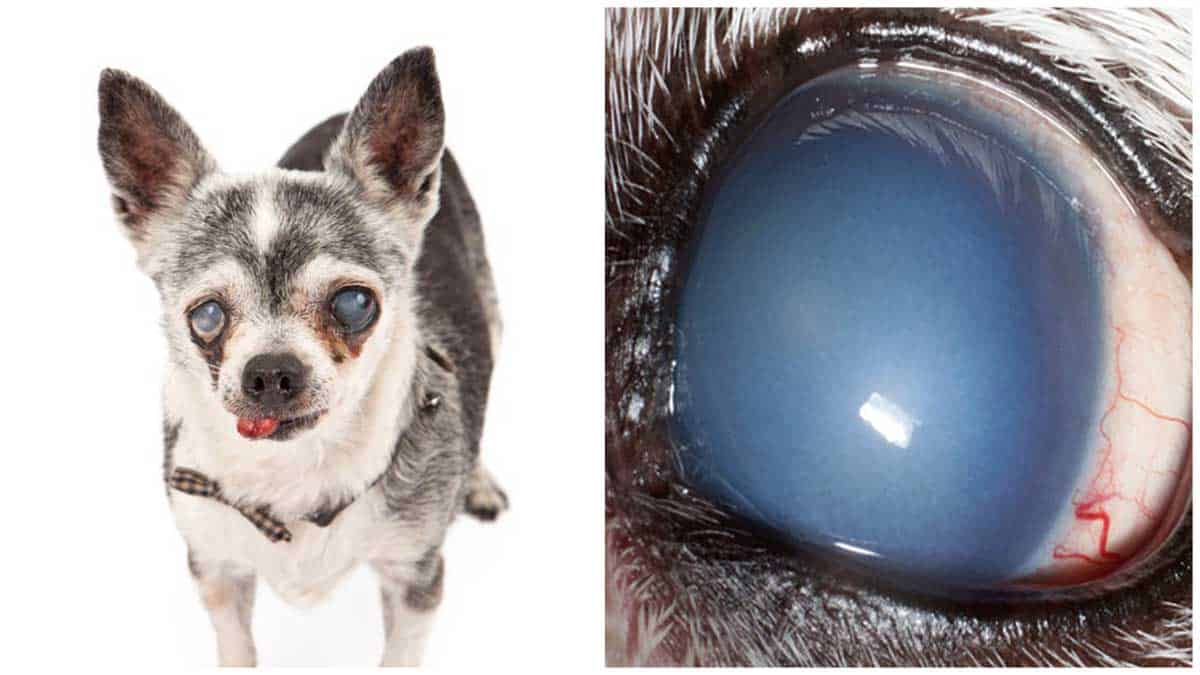Corneal Endothelial Degeneration (CED) is a degenerative condition in dogs that affects the cornea’s clarity.
UNDERSTANDING CORNEAL ENDOTHELIAL DEGENERATION

This age-related disease can result in blindness and severe ocular pain from secondary complications. The cornea is the clear window at the front of the eye. It is a very delicate structure that is less than a millimeter thick. Endothelial cells are located in the inner layer of the cornea. They contain tiny “pumps” that are responsible for maintaining a proper fluid balance in the corneal tissues. This function is critical to ensuring that the cornea remains transparent for vision.
HOW DO THEY DIAGNOSE IT?
When these endothelial cells become sick, the normally clear cornea becomes water-logged, swollen, and opaque. This condition is termed corneal edema. Typically, eyes with corneal edema have a foggy or blue appearance. This is contrary to the normally clear tissues at the front of the eye. As the edema progresses, small fluid-filled blisters, called bullae, can form on the corneal surface. These bullae are fragile and can rupture causing ocular discomfort. Once corneal edema begins to form, unfortunately, it typically progresses with time.
Symptoms that pets with corneal edema may exhibit include blinking, tearing, and rubbing of the eye and face. Other symptoms include avoidance of or obvious discomfort when in bright light.
HOW DO THEY TREAT IT?
Treatment options for this condition are limited. Palliative medical treatments (such as the application of hypertonic saline ointment to the corneal surface) aim to stabilize the corneal tissues and decreasing corneal bullae formation. Some of the surgical options for treatment of CED include corneal transplant, corneal grafting or flap placement, and thermokeratoplasty procedure. They should be discussed with a veterinary ophthalmologist. Identification and appropriate diagnosis early in the course of the disease, and early medical or surgical intervention can help your pet avoid ocular discomfort and slow, delay, or reverse vision loss.
Source: acvo




